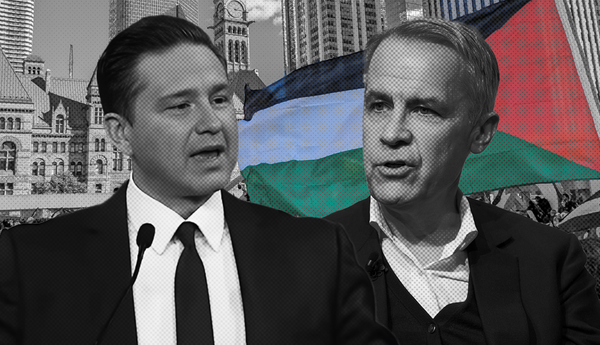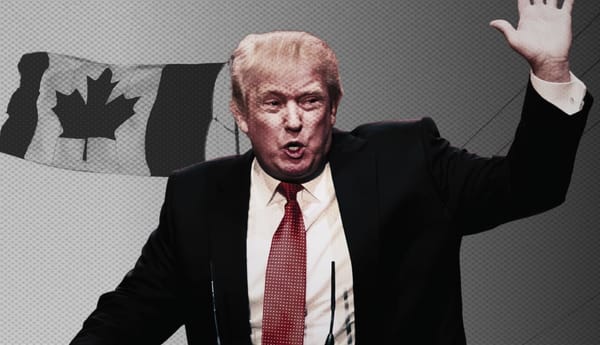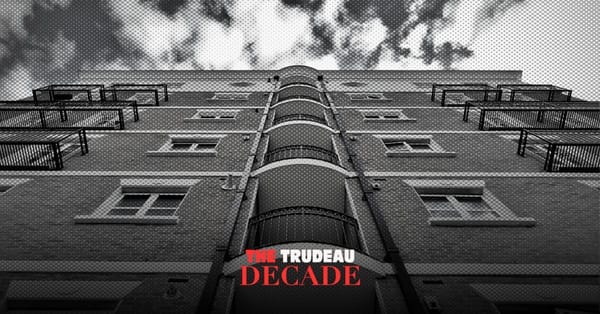In May 2019, viewers gathered for what was billed as a classic TV spectacle: the HBO miniseries Chernobyl.
Upon release, many column inches were spent discussing how the series ‘shone a light’ on ‘what really happened’ in the tragedy, which quickly prompted an outpouring of anti-communist sentiment from conservatives and liberals alike.
Yet despite the show’s obvious neoliberal bias courtesy of showrunner Craig Mazin, Chernobyl couldn’t obscure the fact that the Soviet approach to the meltdown was orders of magnitude better than whatever the capitalist world could have come up with. Many communists defending the Soviets in the aftermath of the show’s release noted this, and since the outbreak of the pandemic we’ve been reminded that they were right.
This has been true in much of the world, including Ontario. I’m going to take a close look here at how the Soviets handled the greatest disaster of their era vs. how Ontario Premier Doug Ford’s government has approached the pandemic. The results should prompt a reassessment of the Soviet approach by those who came to anti-communist conclusions after watching Chernobyl.
Ground Zero
The miniseries opens in the control room of the Chernobyl reactor on April 26, 1986, as we see the meltdown begin and the failsafes break down in sequence.
Critics will read this scene as a failure of communism. Yet they conveniently forget that the meltdown at Chernobyl took place during the Perestroika period, which was a culmination of opening markets and transforming the state-owned economy.
This period was marked by economic decline that made spending priorities change, and caused budgets to be examined through a lens of profitability instead of need. Perhaps the meltdown at Chernobyl could have been avoided if not for these so-called reforms.
Ontario faced a similar situation in the first two months of 2020. As COVID-19 was spreading globally, Ford decided to take a wait-and-see approach to implementing potential safety measures.
This was in part because shortly after the Conservative government was elected, Ford made a series of cuts to healthcare and employment reforms (including a $15 minimum wage and guaranteed paid sick days for all workers), and was attempting to determine the cheapest way to get through the pandemic.
Ford made his decisions based on how he could best preserve profits for business owners and campaign contributors, and not on medical science.
Sealing The Problem Off
At Chernobyl, a meeting among officials took place just hours after the explosion occurred. Those at the meeting decide to proceed with a fast, mostly effective and relatively cheap solution to stem the fire from the meltdown: dumping sand and boron on it out of helicopters.
This move helped seal off the immediate area, preventing a further meltdown, and allowed the team to focus on grappling with the immense task of evacuating everyone living nearby without causing a stampede.
When it became clear that the core might touch water and cause a steam explosion, sending radioactive mist miles away from ground zero, a team was dispatched to drain the core.
Ontarians watched for weeks as reports emerged of the virus travelling from Wuhan to Europe to the United States and finally to Canada. No real safeguards or brakes were put on air travel, so the virus was able to spread from Pearson airport to the rest of the country in short order.
After dithering for a while before giving in to public pressure, Ford sent white collar workers home. Yet he granted major concessions to employers of “essential workers” — a term given a very wide definition — allowing them to keep things running as normal. Moreover, workers who filed work refusals out of a fear of contracting the virus due to insufficient safety precautions had them unanimously refused by Ontario’s Ministry of Labour.
Ontario was then put into what would be the first of many ‘mockdowns’: a Potemkin village of sorts, where the illusion of being closed was preferable to doing the civic work to make it actually happen. And so, the problem worsened.
The Soviets understood that every hour they failed to contain the problem would result in more dead bodies, so they moved quickly. The Ford government also knew moving swiftly would save lives, but they chose, and continue to choose, to protect profits instead.
Dispatching The Ground Squad
In Chernobyl, six days post-explosion, there was an urgent need for a heat exchanger — a system to make the exceedingly hot water near the explosion cool off rapidly. This could be achieved by deploying coal workers to dig a trench that would pull the groundwater through a tunnel. Three divers and hundreds of coal miners were dispatched in short order, doing the job for their country and comrades.
In order to clean up the waste on the roof of the power plant, the Soviets deployed more than 3,800 men throughout the summer, in 90 second shifts. They were coordinated with military precision to get the task done before more damage was caused. Had this task not been completed, the waste would have caused a further rise in radiation levels, which, if spread by the wind, would have caused a truly dire scenario.
Even though the shifts were short, the Ronkin exposure was sufficient for many of the workers to deal with sometimes-lethal consequences. Many of the workers, such as firefighters and other first responders, were aware of the sacrifice. Others may not have known the extent of the danger, but even Mazin concedes they did it for the greater good.
All told, there would be in excess of 600,000 “liquidators” that helped remediate Chernobyl.
In Ontario, there was no ground squad, due in part to the fact that in 2019, Ford cut $200 million from public health budgets. It also took the federal government sending in the military in April 2020 to Ontario’s long-term care facilities to discover just how bad things were because Ford refused to take action.
A Canadian Institute for Health Information report released this March found that “Canada has the worst record for COVID-19 deaths in long-term care homes compared with other wealthy countries,” according to the CBC, with Ontario suffering the largest increase in “excess deaths.”
Ford told Ontarians on a daily basis that he was consulting a team of doctors and medical professionals, yet none ever materialized at media events. As would later be confirmed, decisions were being made through a political, rather than health, lens. In November 2020, the province’s Auditor General called Ford’s response “disorganized and inconsistent,” referencing that the lessons learned from Ontario’s SARS outbreak weren’t being applied.
The Soviet liquidators were given special awards by the government, with some receiving the highest peacetime ones possible. In 2016, they were awarded a special commendation by the Ukrainian government. Moreover, December 14 is a day set aside each year by the Ukrainian government to honour these workers. The Chernobyl museum also keeps a book with the name of every liquidator.
Meanwhile, essential workers here, who have done their best despite the situation the government put them in, haven’t seen any recognition from the Ontario government, materially or ceremonially. For example, despite the call for mandatory paid sick days being supported by 83 per cent of Ontarians, including public health experts, the Conservatives have voted it down in the legislature on at least 25 occasions.
There could not be a starker difference between the response from the Soviets and the Ontario government. In the Soviet Union, the needs of the many outweighed the needs of the few. In Ontario, the needs of shareholders have been the only ones deserving of consideration.
The Aftermath
Due to the swift and decisive action carried out with precision and dedication, as of 2005 the United Nations linked fewer than 50 deaths directly to the events in Chernobyl. They also predicted that up to 4,000 people may eventually die from radiation exposure, “far lower than earlier, well publicized speculations that radiation exposure would claim tens of thousands of lives.”
There have also been other impacts such as zones that were defoliated due to radiation, and humans and livestock that gave birth to offspring many kilometres away from zones originally deemed likely to be safe that were damaged heavily by radiation effects.
Yet when you consider the radiation released by Chernobyl was 400 times more than Hiroshima, which caused between 70,000 and 140,000 deaths, the degree of life conserved due to the sacrifice of workers becomes evident. Most importantly, the lessons learned from Chernobyl have helped prevent more disasters since then, and directly informed international disaster responses. Fewer people died in Fukushima, the most modern nuclear disaster, for instance.
In Ontario, meanwhile, the death toll directly attributed to COVID-19 is at more than 8,300 to date. More than a year after the pandemic began here, positivity rates are rapidly rising. Moreover, vaccinations are being completed slowly, further exacerbating an already dire situation that has led to field hospitals and concerns over a protocol drawn up to give doctors legal protection to essentially triage people to die.
At the time of writing this piece, preparations were underway to move patients without consent from hospitals to long-term care facilities to free up beds, a grim sign that indicates even the government realizes the end is nowhere in sight.
The Score
Most reviews of Chernobyl will mention that the series does a good job showing off the mistakes made by the government in the wake of the disaster. What they miss is that the Soviets did an incredible job preserving life.
Even if you look at the statistics on cancers among the liquidators, incidence of stomach cancers was only slightly higher than the average population and shockingly, incidence of other cancers is within range of the incidence in a non-irradiated population. Studies on the heritability of radiation-related genetic disorders on survivors of Chernobyl, for example, show that they didn’t pass on troubling changes to their children. Placing welfare first, even among first responders, paid off for generations.
The idea that communist governments are in a better position to handle emergencies has been bolstered throughout the pandemic. While the most ardent conservative governments have had the highest death tolls, communist countries have fared immensely better.
The pandemic appears to have started in China. Yet despite having to be the first to deal with it, China was able to build hospitals and organize a united effort to stop COVID-19 in its tracks within the country. China’s COVID-19 death toll is currently at around 4,600 people. That is a rate of 3 per every million in the country. In comparison, Canada’s rate is 649, and the U.S. rate is 1792.
China also ended absolute poverty in the country in 2020 — a Herculean task at any moment in history, but even more impressive during the pandemic. The fact that as of this March, China had also exported about 48 per cent of its vaccine production while the U.S. had exported 0, is staggering.
Other poorer communist countries have also performed incredibly well. Vietnam, for example, one of the first countries to deal with COVID-19 outside of China, has a death toll of just 35, or 0.4 per every million. The Vietnamese approach to containing the pandemic is being held up as an exemplar for future outbreaks. Cuba, meanwhile, despite facing crushing sanctions, has a death toll of 597, or 53 per million.
The foundations of communism are uniquely set up to meet disasters head on and tackle them appropriately: putting lives first; having an educated, science-positive society; having a sense of camaraderie and duty among workers; having a centrally planned economy to meet extreme conditions with money, effort, and skilled manpower. The foundations of capitalism, meanwhile, are to concentrate capital at the expense of all else.
Ontario never stood a chance with an extreme, business-first capitalist at the helm. The market has weighed in on the fates of thousands of Ontarians, and it has decided they can die to preserve capital.






